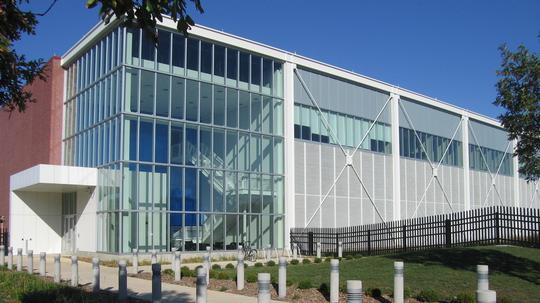
Nestled on the outskirts of the University of Illinois at Urbana-Champaign campus -- at the corner of Oak Street and St. Mary's Road -- is Blue Waters, a supercomputer that was first instituted as a result of a 2007 National Science Foundation grant and an initial $60 million investment from the State of Illinois.
A report released this past week on the economic impact of this supercomputer -- on the UIUC campus, its five surrounding counties, as well as nationwide spillover effects -- puts a whole new meaning to the term "return on investment."
According to the report, Blue Waters has since its inception:
- Generated about $634 million for the Illinois economy -- more than ten times the initial investment from the state
- Led to the creation of 3,439 full-time employment jobs
- Contributed $31.5 million and $64.5 million in local/state and federal tax revenue respectively
- Led to $227.3 million in research grants awarded to Illinois researchers, faculty, and students because they had access to conduct research on Blue Waters
Over the remainder of the project’s timeline (until 2019), it is expected to provide an additional impact of $455 million on the state’s economy, along with the continued creation of 2,333 full-time jobs. This brings the total to $1.08 billion in direct economic impact and 5,772 full-time jobs over the project’s lifespan.
The study was conducted by by Dr. Sandy Dall’erba, Director of the Regional Economics Applications Laboratory and Associate Professor of Agricultural and Consumer Economics at UIUC. The report acknowledges -- but concedes as being hard to quantify -- the additional economic and societal benefits brought by student and faculty this resource has attracted from around the world. Blue Waters also sets aside up to 1% of its computing capacity towards workforce development initiatives to inculcate the next generation of researchers and scientists in the community.
Housed within the National Center for Supercomputing Applications, which has for over twenty-five years pioneered data-intensive computing, Blue Waters is the country’s fastest "open-science, sustained-performance supercomputer," frequently running code at speeds of one petaFLOP, or 1015 floating point operations per second. It is consistently cited by nationwide market technology reports as having impacted an entire range of fields in science.
For instance, Blue Waters is enabling University of Minnesota researcher Paul Morin to access high-resolution geospatial imaging of the entire Arctic landscape in a little under two years, to understand how much ice has melted over time. It is empowering University of Illinois Political Science Professor Wendy Tam Cho to produce 800 million objective, nonpartisan electorate maps in an effort to combat gerrymandering. It is helping researchers at Carnegie Mellon University understand the history and evolution of the universe by modeling the first massive black hole and galaxy formation. Larissa Reames from the University of Oklahoma is using it to understand how urban planning and development affects severe weather and thunderstorms.
Blue Waters was first proposed for in an NSF Request for Proposals by former NCSA Director Larry Smarr, who realized the need to bring supercomputing out of defense applications and into the civilian field. One of its earliest contributions was a project called Mosaic that aimed to make the precursor to modern day internet more accessible. Within its first five years, Blue Waters saw the number of researchers using it spiral from a few hundred to 50,000.
"State and federal support for advanced high-performance computing provides immediate economic impact for our communities and positions the United States to lead the world during a critical era for cyberinfrastructure,” said Dr. Bill Gropp, NCSA interim director and co-principal investigator for the Blue Waters Project, in a statement.
Dr. Gropp stresses how Blue Waters, as a supercomputer, is crucial to advancing the economic development goals of UIUC as a research university. Specifically, this is achieved by bringing together high-quality interdisciplinary researchers under one roof, leveraging technical capabilities to harness data for larger societal good, and providing direct and indirect economic benefit to the surrounding university community.
The full report on the economic impact of Blue Waters, authored by Dr. Dall’erba, is available here. An extensive annual report, highlighting "a year of scientific exploration and breakthroughs enabled by the project's leadership class supercomputer and its associated support, training, and education efforts," is available here.
Note: All dollar figures in the study are in 2015 terms, calculated using that year's version of IMPLAN -- a commercially available software package for economic impact analysis.








